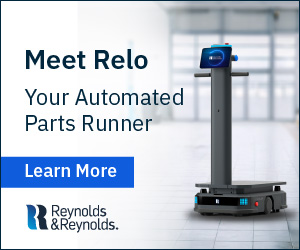Build AI Agents to help you with daily tasks
We all have too much to do. The typical executive has more on their to-do list than they can accomplish any given week.
Add to that list your spouse, your kids, and any social or community activities, and suddenly you’re behind on all of it. Speaking from experience as someone with a fantastic team and an outstanding Executive Assistant, I’m still short on time, constantly.
Help is on the way
AI agents aren’t another dashboard or chatbot; they’re software teammates that pursue goals and get work done on your behalf. They can reason, plan, and remember context. Give them guardrails and they’ll make decisions, learn from outcomes, and adapt.
What makes this possible now is multimodal generative AI and modern foundation models. Agents can process text, voice, images, video, audio, and even code, often simultaneously.
They can engage in conversations, weigh trade-offs, learn over time, and actually move work forward, facilitating transactions and running business processes. And because agents can coordinate with other agents, you can chain them together to handle more complex, end-to-end workflows.
In short, AI agents are like a 24/7 assistant manager for your dealership. Thinking, learning, and coordinating the sales floor, service drive, and parts counter, they can work deals and processes without you having to ask.
What can an AI Agent do for me?
An AI agent can take the busywork off your plate. It can answer web leads in under a minute with a tailored reply, book and rebook service appointments to keep bays full, prep clean payment options, tune used-car pricing as the market shifts, and surface customers ready for a painless trade-up.
If coordinated across sales, service, and parts, it could coordinate a vast array of tasks, update the CRM and provide a concise daily brief, allowing managers to spend time on customers, not clicks.
You don’t need to rip and replace everything to try this. An AI agent can plug into your existing systems, your CRM/DMS/IMS, website chat/phone, email/text, and calendar.
Then you add a few key components: an AI engine to do the “thinking,” a simple connector to move data between systems, an approval inbox so a human can review anything customer-facing, and basic guardrails for pricing, privacy, and consent (CASL). Start small with a speed-to-lead or service reminders, prove the lift, then expand.
Next, we’ll look at a few examples of what AI Agents could do in your store, along with some context on why they might be helpful.
Possible AI Agents for your store by role:
General Manager
- Ops Command Agent
- Pulls DMS/CRM/IMS data into a daily “morning brief,” flags anomalies (gross erosion, aging units, floorplan interest, etc), recommends actions, and tracks follow-through.
General Sales Manager
- Speed-to-Lead Agent
- What it does: Classifies (OEM/website/3rd party), drafts personalized replies within 60 seconds, routes to the right rep, books appointments, and logs everything to CRM.
Used Car Manager
- Used Car Pricing Agent
- What it does: Monitors market comparables, recommends daily price moves to hit turn/gross goals, flags aged units, and proposes wholesale vs. retail decisions.
Service Manager
- Declined Services Reminder Agent
- What it does: Tracks declined multi-point inspection lines, prioritized by safety/margin, sends tailored education and bundles, and books follow-ups.
How to get started
Pick one or two to start with; speed-to-lead and service reminder are perfect pilots. Use Zapier or Make to connect your website chat form to your CRM and Gmail/Outlook, and add Twilio (texts) or SendGrid (email) for customer messages.
Keep an approval step by routing drafts to a manager via Google Chat or email before anything goes out. Log every action in Google Sheets or Airtable, use Calendly to book appointments, and store your approved message templates and disclosures in Google Docs. Set simple targets (reply <2 minutes, show rate +10 per cent) and make sure CASL consent is checked before any outreach.
Start small, measure real outcomes, and keep a human in the loop for any customer-facing or compliance matters, as well as for any auditable actions.
As the agent proves itself, faster replies, fuller bays, fewer clicks, you can layer on more use cases and stronger guardrails. The goal isn’t more software; it’s more time back for managers and a smoother experience for customers.











